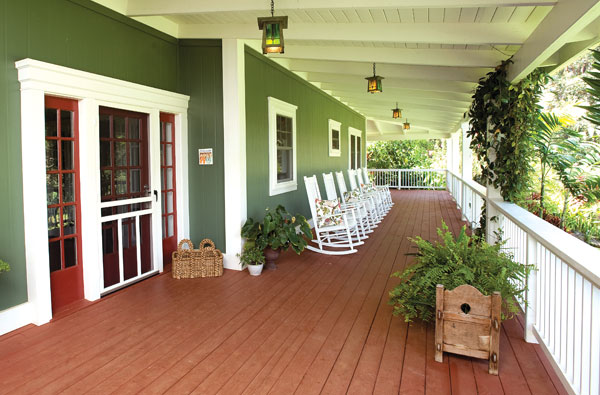What Is a Plantation? The Dark History of the South's Most Beautiful Homes
Table Of Content

The owner aimed to continually maximize productivity and discipline on plantations in the rural South. However, it is important to acknowledge the complex history of these homes and the role that they played in the institution of slavery. Visitors can take guided tours of the homes, learning about the history and culture of the time.
Building Shape
During the first half of the nineteenth century, classical ideas blended with practical townhouse design to create space-efficient double gallery houses. These two-story homes sit on brick piers a short distance from the property line. The architectural style of plantation homes varies depending on the region and time period in which they were built.
Home style: dream houses in every US state - lovePROPERTY
Home style: dream houses in every US state.
Posted: Wed, 24 Apr 2024 07:00:00 GMT [source]
Contemporary Southern Homes
Plantation estates are an important part of the architectural history of the Southern United States and the Caribbean Islands. These homes are a testament to the wealth and power of plantation owners during the 17th to 19th centuries and continue to be a popular tourist attraction today. The French fur traders developed settlements along the Mississippi River. Farmers and enslaved people built grand plantations in the fertile river lands. But the 1734 Roman Catholic convent of the Ursuline nuns may be the oldest surviving example of French colonial architecture.
What Makes Us Unique
Turning mauka toward the main house, a blue rock wall with recessed limestone plumeria carvings acts as a privacy screen. The McParlands did not want air conditioning and, while the architects convinced them to add it for resale value as well as their guests’ comfort, the house doesn’t need it on most days. Its passive design allows the ocean breeze to pass through the home, bringing cooling through natural ventilation. As has been the case throughout our history, The Garlinghouse Company today offers home designs in every style, type, size, and price range. We promise great service, solid and seasoned technical assistance, tremendous choice, and the best value in new home designs available anywhere. A Creole cottage from that time was wood frame, square or rectangular in shape, with a hipped or side gable roof.
Antebellum Homes on Southern Plantations - Architectural Digest
Antebellum Homes on Southern Plantations.
Posted: Mon, 01 Feb 2016 08:00:00 GMT [source]
The McParlands were fond of homes designed by Warren Sunnland, an architect with decades of experience in Kona. They reached out to him at Sunnland Architects, a new firm Warren formed with his son, Tai Sunnland. If your tastes run to the brick houses of the East and Midwest — you may have to go east to find them.
The clapboard walls of a Monterey house scream “Cape Cod,” yet the long, airy verandas are so, so Californio. After the great New Orleans fire of 1788, Creole builders constructed thick-walled townhouses that sat directly on the street or walkway. Creole Townhouses were often of brick or stucco construction, with steep roofs, dormers, and arched openings.

Mansions were built for the purpose of showcasing wealth and status, while plantation homes were built for practical purposes. Impressions of Wealth – The homes’ large scale and fine materials (brick, columns, hardwoods) conveyed a plantation’s prosperity and status. The owners wanted their home’s grandeur to reflect the vast agricultural wealth produced on their lands. The architecture of plantation homes is heavily influenced by European styles, particularly Georgian, Federal, and Greek Revival.
Do plantation houses have features of gothic and Italianate eras?
The main roof would extend over the porch or sidewalk and be held in place by thin, gallery piers. Inside, the cottage generally had four adjoining rooms — one room in each corner of the house. Small storage areas were in the rear, one space having stairs to the attic, which might be used for sleeping.
Plantation House Plans
In the 18th and 19th centuries, many incredible mansions were built throughout the South… many a result in large part to slavery. Edward and Wallis Windsor’s signatures in the visitors book, August 22, 1954. The ground floor bagno dei cavalieri — men’s bath — features an antique type of Verona stone with an 18th-century faucet.
Some of the most common styles include Greek Revival, Federal, and Georgian. So in summary – plantation houses were ostentatious displays of wealth while homesteads were humble shelters for frontier settlers and farmers. The two structures differed greatly in terms of scale, style, purpose and historical significance.
In many ways, the adoption of classical styles in SoCal made a great deal of sense. As Holliday notes, here was a chance to start the American experiment over, in a truly idealized setting, a chance for these homeowners to become the powerful and prestigious people who had typically shut them out in their home states. Many people view plantation homes as monuments to a dark period in American history, and there have been debates over whether they should be preserved or demolished. The profits from the sale of these crops contributed significantly to the Southern economy, making plantation owners some of the wealthiest people in the region. Over time, plantation homes have evolved to become symbols of Southern culture and history.
Comments
Post a Comment